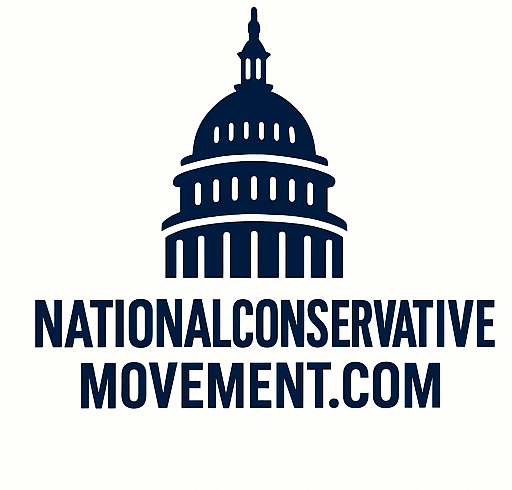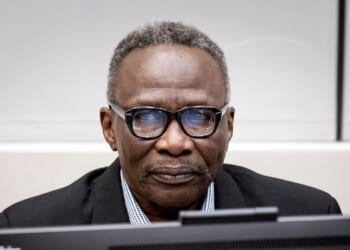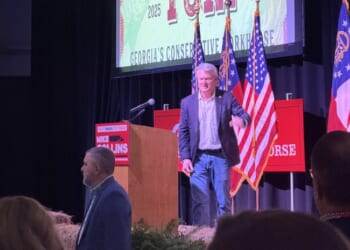
Australia will be a major source of the rare earths being withheld by China, President Trump said Monday during a visit by Prime Minister Anthony Albanese.
Mr. Trump and Mr. Albanese signed an $8.5 billion minerals-sharing agreement that’s been in the works for four to five months. The deal includes joint projects, U.S. investments in mining and processing within Australia and third-country pacts to produce rare earths.
“It was sort of good timing, we got it done just in time for the visit,” Mr. Trump said at a White House lunch with Mr. Albanese. “In about a year from now, we’ll have so much critical minerals and rare earths that you won’t know what to do with them. They’ll be worth about $2.”
Mr. Albanese said the U.S. and Australia already had a great relationship, but the rare earths agreement is “taking it to the next level.”
Beijing recently clamped down on China’s export of rare earth elements that are used in smartphones, electric vehicles, lasers and military technology.
China has a stranglehold on the production of the rare minerals and metals, whose atomic structures give them unusual powers.
Mr. Trump threatened to impose a 100% tariff on Chinese goods, on top of existing levies, in retaliation for Beijing’s restrictions, though both sides could work something out before the implementation date of Nov. 1.
“I think that China will come to the table and make a very fair deal, because if they don’t, they’re going to be paying us 157% in tariffs,” Mr. Trump said Monday, using a calculation that incorporates earlier levies.
Mr. Trump said he might also withhold shipments of airplane parts to China if they play hardball.
The president confirmed he plans to meet Chinese President Xi Jinping at the Asia-Pacific Economic Cooperation summit in South Korea on Oct. 31 and Nov. 1 and plans to visit China sometime early next year.
“We have to thrive together. It’s a two-way street,” Mr. Trump said. “I think we’re going to end up having a fantastic deal with China.”
Beijing said Monday it is open to dialogue.
“Tariff and trade wars do not serve any party’s interest,” foreign ministry spokesman Guo Jiakun said. “The two sides need to address relevant issues through consultation on the basis of equality, respect and mutual benefit.”
For now, the trade standoff is putting a spotlight on the globe’s reliance on China for rare earths.
The U.S. has rare earths but fell behind China when it seemed, in prior decades, that importing the minerals would be more cost-effective than extracting and processing them here.
A 15-item row of the periodic table known as the lanthanide series, plus yttrium and scandium, form the roster of rare earth elements.
These elements are used in missiles and fighter jets. They also power green technology, including windmill turbines, and help magnets inside electric-vehicle motors perform even when the motor heats up.
The Trump administration is looking for alternative sources, including rich deposits of rare earths in Mountain Pass, California, though Australia is another option.
Kevin Hassett, the director of the National Economic Council, said Australia has one of the “best mining economies on Earth,” the smartest refiners, and “lots and lots of rare earths.”
“Australia is really, really going to be helpful in the effort to take the global economy and make it less risky, less exposed to the kind of rare earth extortion that we’re seeing from the Chinese,” Mr. Hassett told White House reporters.
Australian officials believe their nation can become a rare earths superpower, supplying more than 30 of the critical minerals the U.S. wants and needs.
Australia recently created a critical minerals reserve. However, it needs to expand its processing and refining capabilities to compete with China.
Leaders said they are working on it.
“It’s part of the agreement,” Mr. Trump said.
The deal calls on both countries to identify rare-earths projects of interest and identify gaps in their supply chains.
Within six months, each country is supposed to provide at least $1 billion to finance projects and “generate end product for delivery to buyers in the United States and Australia,” the text of the deal framework said.
Both countries are expected to streamline their permitting processes to advance rare-earths projects rapidly, and they agreed to identify third-party partners who can join their efforts.
“The participants will cooperate to assist in mapping mineral resources in Australia, the United States, and elsewhere as mutually determined, to support diversified critical mineral supply chain,” the framework said.
More broadly, the U.S. had a trade surplus of nearly $18 billion in 2024, so Australia only faces Mr. Trump’s baseline tariff of 10% on products it sends to the U.S.
“Australia pays among the lowest tariffs,” Mr. Trump said Monday.
Key imports such as steel and aluminum are subject to high, sector-specific tariffs imposed by the Trump administration, so the Australian may seek exemptions.











